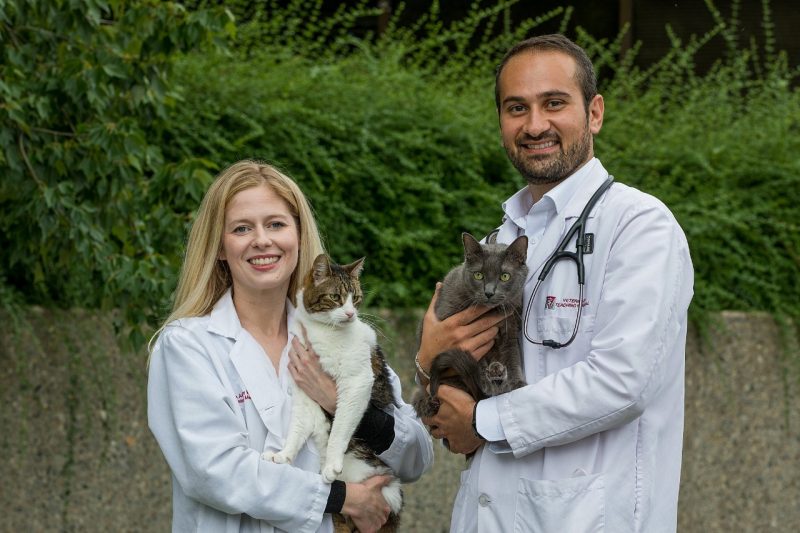
Researchers at the Virginia-Maryland College of Veterinary Medicine will investigate the most common form of heart disease in cats and the devastating blood clotting complications associated with it.
Giulio Menciotti, assistant professor of cardiology, and Ashley Wilkinson, assistant professor of small animal internal medicine, have been awarded an EveryCat Health Foundation grant to study coagulation in cats with hypertrophic cardiomyopathy using thromboelastography. The EveryCat Health Foundation is a nonprofit that focuses exclusively on feline health research.
Hypertrophic cardiomyopathy (HCM) is the most common form of heart disease in cats. HCM affects up to 15 percent of the cat population, and in some breeds such as the sphynx, Maine coon, and ragdoll, the disease has been demonstrated to have genetic bases and be heritable.
HMC causes thickening and stiffening of the heart walls, which in turn impairs the ability of the cardiac muscle to relax and accept blood. As a consequence, some cardiac chambers can become severely enlarged. Although many cats with HCM have no clinical signs, the disease can lead to congestive heart failure or feline arterial thromboembolism (FATE).
Enlarged heart chambers predispose cats to forming blood clots that then can dislodge from the heart and block the blood supply to parts of the body. Feline arterial thromboembolism occurs when a blood clot obstructs blood flow to a part of the body, typically to the hind legs. This causes paralysis and severe pain, and because of limited treatment options, cats with HCM and FATE are often euthanized.
“In practice, I’ve seen how cats suffer quite a bit. I’ve always found it frustrating to treat, because if they do throw a blood clot, their outcome is poor in a lot of cases. Practice really sparked my interest in this subject,” said Wilkinson.
Despite HCM’s high rate of occurrence, experts don’t fully understand the mechanisms that cause FATE to occur.
Menciotti and Wilkinson want to better understand why cats with HCM develop FATE by using a method called thromboelastography (TEG) to study hypercoagulability, or excessive blood clotting.
They will investigate if cats with advanced HCM and heart chamber enlargement have similar thromboelastography parameters as cats with HCM and no heart chamber enlargement.
“The ideal result is that we find that these cats are indeed hypercoagulable and TEG helps us identify them, so we can think of a better or earlier way to treat or prevent this from happening. This will add an important piece to the puzzle,” said Menciotti.
With this knowledge, veterinarians can better determine which cats should receive anticoagulant drugs.




